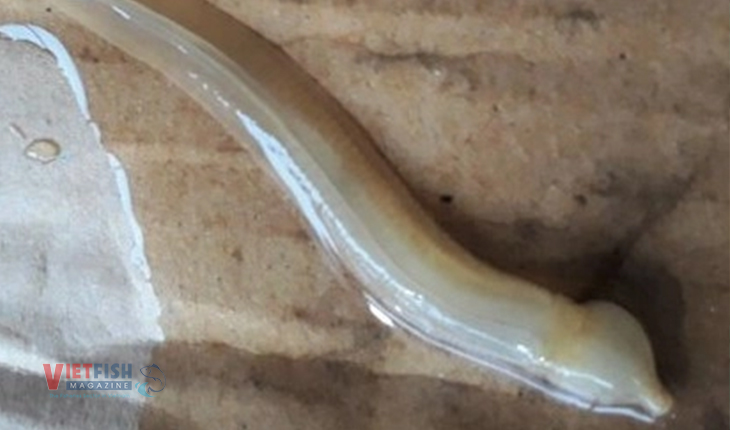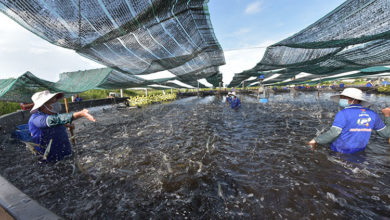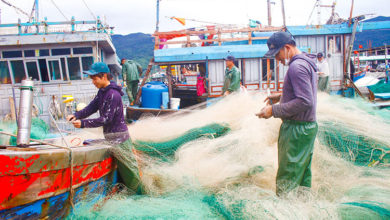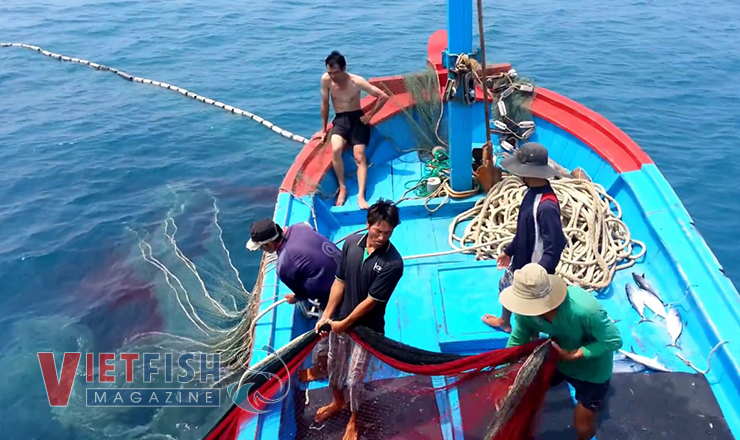Find solution to sustainable farming of groupers
Grouper is one of the main marine species farmed in Vietnam. It is evaluated to have great potential but face difficulties to develop in a sustainable way.
Small scale
Domestic demand and exports of grouper is high, with selling prices ranging between 250,000 and 500,000 dong/kg, up to each species. According to the Directorate of Fisheries, the total farming area of marine species reached 57,000ha in 2019 with 4.5 million m3 of cages and output of 470,000 tons. Farmed groupers account for 25-30%.
A vast majority of groupers are farmed in Quảng Ninh, Hải Phòng, Thái Bình, Nam Định, Ninh Bình, Thanh Hóa, Huế, Phú Yên, Khánh Hòa, Ninh Thuận, Vũng Tàu, Cà Mau, and Kiên Giang. The farming models mainly involve floating cages made of wood, bamboo or plastic, 30-100 m3/cage; and coastal inland ponds with at least 3,000 m2 area at the depth of 1,2 – 1,5 m. In actual, groupers are mainly reared in rafts and onshore ponds, accounting for 30-40% of the total marine aquaculture area.
The productivity of cage farming ranges between 7 and 10 kg/m3, while one hectare of grow-out pond produce 5-7 tons of groupers.
The Research Institutes of Aquaculture No.1, 2, and 3 of Nha Trang University and some companies have mastered the artificial production technology of grouper broodstocks commonly reared in Vietnam, greatly contributing into the development of the grouper sector. As estimated, local grouper production facilities meet around 50-60% of the demand for this species for commercial culture.
Hybrid grouper has been considered a popular farmed species as it weighs up fast, has strong resistance to diseases, and is easier to be reared than E.coioides.
Resolve difficulties
Grouper farming in Vietnam is running into challenges in developing sustainably. In particular, the number of broodstocks are not ensured and quality is not controlled, which are attributed to the dependence on natural resources and imports through border gates. Local production facilities of broodstocks only meet one third of farmers’ demand.
Likewise, they are fed with the feed used for other marine species such as perch and yellowfin pompano but a single-purpose feed for grouper, resulting in poor nutrition, high FRC and low productivity. In some places, forage fish are used as feed for groupers, resulting in risks of environmental pollution and disease spread.
On the other hand, the consuming market is limited with a vast majority of fresh groupers being sold to restaurants in tourism destinations or exported to China and Taiwan.
For further development of the grouper sector, it is necessary to study and select high quality groupers which weigh up fast and can resist dangerous diseases. Besides, it is necessary to invest into studies, produce a large amount of vaccines to prevent groupers from infecting dangerous diseases during commercial culture, study and produce feed for groupers to meet their nutrition demand, and reduce production costs. Forage fish should not be used as feed so as to reduce environmental pollution and disease outbreak.
VFM






